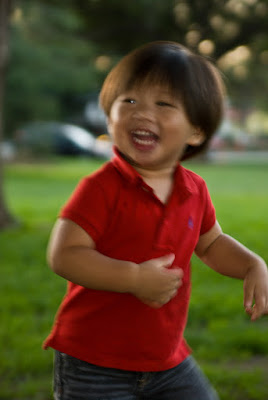
The shot above is an illustration of flash blur, where part of the subject is relatively sharp, but the subject's movement appears as a trail/blur. It can be good or bad, depending on your intent. The upside is that it definitely creates a feeling of movement. The downside is the blurriness of the subject.
Whether you want to avoid flash blur or intentionally cause it, here's how it happens:
1. Exposure is set for normal exposure (not underexposure) of ambient light.
2. Shutter speed has to be slow.
3. Flash is activated and the flash exposure is also normal.
4. Subject and/or camera have to be moving.
The flash freezes the subject's image either at the beginning of the exposure (front curtain sync) or at the end of the exposure (rear curtain sync). In either case, the subject's movement becomes visible in the image from the slow shutter speed. If the ambient is sufficiently underexposed, flash blur becomes imperceptible.
Here's another sample of flash blur:

Extreme case of flash blur (and not appropriate in this case):

No comments:
Post a Comment
Thanks for your comment. It will be published as soon as we get a chance to review it, sorry for that, but we get lots of spam with malicious links.